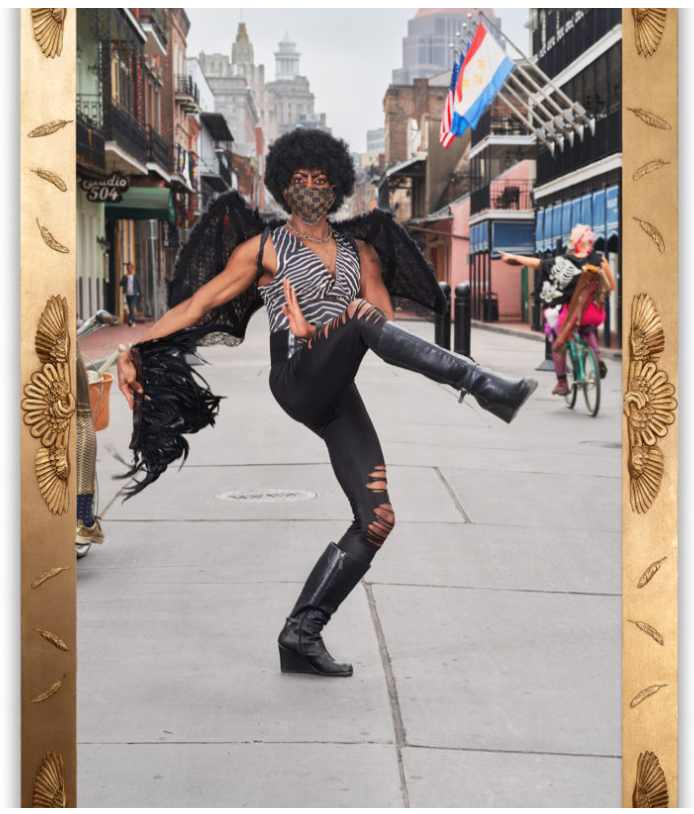At Home with Elizabeth Denny
by Katharine Earnhardt on June 29, 2020
As the pandemic rolls on, we’re feeling the die-hard need to lift each other up. More than ever, we want to support each other’s goals, celebrate individual passions, and share uplifting news around the world. To do that, we’re furthering our series on Creatives and highlighting what people are doing to stay inspired, along with personal tidbits about their journey. These highlights will include art world professionals and beyond. We’ve got gallerists, artists, designers, framers, DIY-ers, chefs, entrepreneurs and more lined up.
Kicking it all off is our conversation with Elizabeth Denny, Co-Partner of the Denny Dimin Gallery in New York City. Elizabeth represents a roster of 19 emerging to mid-career artists. She founded her gallery in 2013. It currently operates out of an incredible space in Tribeca with one of the first apartment-style galleries to debut in Hong Kong (!). Here’s what’s happening with Elizabeth through the insanity of 2020.

Mason Lane (ML): By representing artists, a huge part of your job is managing your artists’ career. How do you help them stay inspired during this pandemic?
Elizabeth Denny (ED): It’s usually the reverse! The gallery artists have kept me inspired throughout the pandemic, especially as they adjust their work environments and expectations and in some cases, what is important to them in their work. I try to keep them motivated by staying connected and showing them that the gallery will be here for them through the crisis and beyond. Many of them have had all their museum and gallery exhibitions and residencies postponed or brought online. Fortunately being an Artist and being a Gallerist are both lifelong practices, so we’ve just had to shift to a long term mindset and tune out the frenetic, pre-pandemic expectations of our culture- in New York in particular.
ML: This year has been insane. What’s the weirdest thing you’ve done during the pandemic?
ED: Definitely teaching Kindergarten. It was fun to be part of my son’s classroom during his video meetings, see his teachers and friends, and watch his reading and writing skills improve. On the other hand, teaching is not my calling. It’s often hard to maintain calm and patience. It’s amazing to now have our caregiver back, but that 3 month period of just-family-time was pretty special.
ML: What’s the hardest part of your job?
ED: The hardest part of my job was and it still is communication. We have to stay in constant and close contact with our artists, clients, collaborators, press, staff, the wider public. This is even more true now, when you can add in our landlord, accountant, and gallery neighbors. I often can’t keep up and feel guilty if I don’t have a chance to call an artist when I was supposed to or I haven’t checked in with a valued client in a while. I am also a person who becomes less communicative when under stress and this has always been a weakness for me professionally. Fortunately, my business partner, Rob Dimin, is really good at keeping up with people and takes a lot off my plate and our preparator, Dylan Lilla excels at neighborhood relations.
ML: What’s the most rewarding part that keeps you going every day?
ED: The most rewarding part of my job is that I get to work with artists and exhibit art as an actual job. It truly is a dream job and I feel very lucky still to be here after nearly eight years. I would say “going strong,” but you know, pandemic… so that might be an overstatement at the moment. I also work with great people.
ML: Creativity is such an outlet for people these days, and it’s often an overlooked skill. How does the creativity of your work help you outside the job?

Sean Fader : Thirst/Trap
ED: Being a culture worker means that I have a voice in society and a platform to share work that I care about and that intersects with important timely issues. This is more than enough to make my life feel meaningful. For example, the exhibition we just reopened with, Thirst Trap by the artist Sean Fader, is about the past 20 years of queer history, starting with public awareness of hate crimes against LGBTQIA individuals in the late nineties, to how a rise of recognition and rights crossed paths with the rise of the internet and social media. This feels important right now during Pride Month and at a time when we are fighting for Black Lives Matter because there are some parallels. I do not have many boundaries between work life and personal life, they’re all kind of wrapped up together. The former has (or had) more cocktails and the latter has more diapers, but they’re all kind of a continuum of things that I do and care about.
Thanks so much to Elizabeth. Check out her gallery here, which is open by Appointment in NYC. And if you’re a creative wanting a spot on the blog, email us! We love any story that shares some inspiration and lifts us up.
